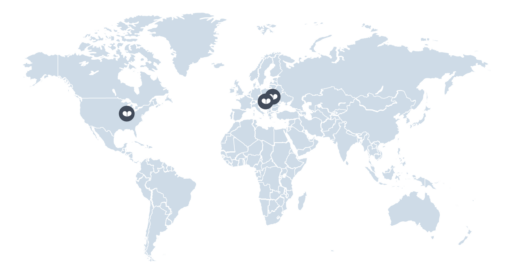A proper plan is the basis for the success of any marketing project. But such plans can be various – short-term, long-term, general, specific, etc. But have you ever heard about the operational plan?
Do you know what this kind of plan looks like? Or how to craft one?
If not, let’s delve into the essential definitions, steps, tips, and examples that will help you understand it.
What is an operational plan?
In marketing, the operational plan is the process of meticulously defining, organizing, and coordinating various activities and resources to achieve specific marketing objectives. So, this plan is like a map that details the day-to-day tasks, responsibilities, and timelines necessary to succeed and implement broader strategic goals.

5 benefits of preparing an operational plan
However, an operational plan can do much more in the marketing area. For example, it can help:
- improve team efficiency,
- provide financial stability,
- contribute to long-term strategic goals,
- improve quality,
- and also provide a framework for adapting to unforeseen challenges.
Check out these benefits in more detail below.
Improved efficiency and workflows
The operational plan may streamline work as it offers a structured approach to daily activities. It provides a clear scheme, thanks to which marketing teams can operate better. It also makes every task contribute to overall endeavors, enhances workflows across departments, and promotes cohesion and synergy in business processes.
⭐ If you utilize Marketing Resource Management software, you will create an even more collaborative environment among team members.
Financial Stability
This plan includes an operating budget, which defines the amount of money allocated to marketing tasks and projects. Therefore, it ensures fiscal responsibility and prevents overspending, so it works for the whole organization’s finances. What’s more, it acts as a critical component in controlling marketing costs and achieving key performance indicators (KPIs).
Strategic Alignment
Next, it helps align initiatives and resources with the broader goals outlined in your marketing or business strategy. It creates actionable steps and milestones, thanks to which employees can better understand their role in the company. As a result, everybody can work towards a common goal, as they know its purpose.
Better Quality
Components of an operational plan can incorporate quality assurance and control procedures. They act as a safeguard because they systematically identify and rectify potential issues in operations. With proper elements in this plan, firms can meet high standards with no extra effort and ensure the quality of their marketing services meets requirements. The big advantage here is that commitment to quality at this level builds customer satisfaction and loyalty.
Adaptation to Changes
Last but not least – this plan equips organizations to respond effectively to changes. Maybe a brand wants to adapt to new marketing trends, promote a new product launch, or adjust to shifts in different processes? In all cases, an operational plan will come in handy, as it can help navigate through uncertainties. So with this approach, you can actually maintain competitiveness in the industry.
Operational plan vs. strategic plan vs. tactic plan
You heard about operational, strategic, and tactical plans and think they are similar to each other? Well, not exactly. They are integral components of an organization, but each serves distinct roles.
Let’s start with the widest term:
Strategic plan
It operates at a high level and defines long-term goals for the entire company over the next years – usually three to five years. It involves creating a strategic proposal that outlines the marketing mission and objectives. Also, it encompasses factors such as fiscal year projections.
This plan defines the entire marketing direction and is a foundation for more detailed operational plans.
An overview of strategic planning:
- Scope: high-level, long-term vision and goals.
- Time: long-term, typically covers the next three to five years.
- Tasks: defines overarching strategic objectives.
Next, we have:
Operational plan
It works in a relatively short timeline and often focuses on daily tasks and marketing goals. It provides a clear understanding of daily activities and the workflow across the organization. Also, this plan outlines how marketing team members execute tasks and manage resources.
It allows companies to implement the strategic plan step by step.
Operational Plan:
- Scope: daily activities, tasks, and goals.
- Time: short-term, often focuses on the current year.
- Tasks: detailed steps for specific marketing teams.
And last, there’s:
Tactic plan
This action plan involves specific steps designed to implement strategic and operational planning and evaluate outcomes. It divides general marketing goals into more specific moves to address the problem and decide what to do to achieve the main purpose.
It helps teams make operational objectives more effective by providing specific goals, and accounts for the broader company vision.
Tactic Plan:
- Scope: specific actions to implement the strategic plan.
- Time: intermediate, shorter than the strategic plan but longer than operational plans.
- Tasks: breaks down objectives into actionable steps and guides teams in achieving high-level goals.
Step 1: Define purposes
Think, what is the goal of an operational plan? What do you aim to achieve? At this stage, you need to be more concrete than when setting strategic priorities. Consult with your marketing team, do some brainstorming, select one or more of the best ideas, and prioritize them.
Step 2: Identify components
Identify key elements that can’t be ignored because they are the ones that will ensure the venture meets certain conditions. Here, you may include:
- daily tasks,
- standards,
- processes,
- documents,
- quality assurance measures,
- and specific roles your team can take.
Step 3: Assess resources and constraints
Next, evaluate available assets – for example, human resources, finances, and technology. Also, consider any constraints that may impact your operational plans, like trends, time limitations, or external factors.
Step 4: Develop a work plan
Then, create a detailed work plan. It should identify all necessary jobs, responsibilities, and include timelines. Divide larger goals into manageable steps. Also, make sure everyone understands their task.
Step 6: Monitor and evaluate
And a step you shouldn’t forget – regularly monitor the progress of your marketing plan and adjust it as necessary. Also, conduct a comprehensive evaluation at the end of various stages and the entire process. Evaluate what worked well and what didn’t, learn from mistakes, and gather insights for future planning.
Tips for a better operational planning process
The above steps will help you streamline your marketing operations, but the tips we have prepared for you below can be just as useful.
Here they are:
- Above all, encourage open communication and cooperation among team members. Promote the exchange of ideas and diverse perspectives. Clearly communicate roles, responsibilities, and expectations. As a result, you wil see a collaborative environment in which nothing is impossible.
- Leverage technology – from Marketing Resource Management software to social media, project management, and data analytics tools. The right tech can streamline tasks and boost your efficiency.
- Be regular in your duties – whether it’s about identifying available assets, constraints, etc. This way, your plan will remain realistic and achievable, and you will prevent resource-related bottlenecks.
- Prioritize tasks strategically based on their impact. Create a logical sequence of activities and make sure the most crucial tasks are addressed first.
- Clearly define roles and responsibilities, so team members can take ownership of their tasks. Thus, you will enhance accountability and commitment.
- Treat every operational plan as an opportunity for learning and improvement. Evaluate the outcomes, gather feedback from members, and use these insights to perform better in the future.
- Be flexible to be able to better adapt to unforeseen changes and create a resilient plan that will weather uncertainties.
- Boost morale and acknowledge milestones achieved throughout the execution of your operational plan. This will instill a sense of accomplishment and motivate teams to give their best.
Examples of effective operational planning in different industries
An operational plan can help in more areas than just marketing.
Check out examples in industries like retail, healthcare, manufacturing, and technology.
Retail
In retail, effective operational planning is a must for managing inventory efficiently. Retailers utilize demand forecasting and inventory optimization tools to predict customer demand and guarantee products are adequately stocked.
Such a plan outlines the optimal stocking levels, reorder points, and supply chain strategies to prevent overstocking or stockouts. Therefore, products are available when customers need them.
Healthcare
Here, the focus is on optimizing patient care processes and delivering high-quality services. Healthcare providers can create detailed plans for patient flow and staff scheduling.
Also, emergency departments can develop these plans to handle patient surges effectively and specify triage procedures, staff requirements, or communication protocols. As a result, they can reduce wait times.
Manufacturing
In this sector, this type of planning is for better production efficiency and meeting demand. Manufacturers can create detailed plans to schedule production, use of materials, and quality control.
For instance, a car manufacturing plant may create an operational plan that describes the production sequence, machine utilization, and quality checks at various stages. Thus, they can achieve a smooth production process, minimize downtime, facilitate timely delivery, reduce costs, increase productivity, etc., etc.
IT
Another example is the IT industry, where operational planning is applied to project management processes. It defines tasks, timelines, and resource allocation for short development cycles.
For instance, a software development team may have a two-week sprint with specific goals and tasks. With a good plan, they can adapt to changing project requirements, respond to feedback rapidly, and deliver high-quality software within short timeframes.
Improve your marketing operation plan with MARMIND
MARMIND is a Marketing Resource Management platform that helps global teams streamline their marketing operations. It can help you with:
- Marketing planning
- Budget & spend management
- Performance & control
- Content & digital asset management
- Cross-team collaboration
- Workflows & automation
- And more.
Instead of using several stand-alone tools, you work with an all-in-one platform.
MARMIND’s centralized platform lets you manage global marketing resources efficiently and streamline complex processes. You can create top-down marketing plans, eliminate problematic spreadsheets, simplify the briefing process, ensure standardization, speed up presentations to stakeholders, and utilize customizable dashboards for performance measurement and analysis.
Also, you can seamlessly manage budgets, break them down into allocations, and get automated forecasts for efficient tracking.
Like you see, one platform – many possibilities. Just book a demo and check out how MARMIND works.
Create an operational plan and leave the competition behind
Effective operational planning is a versatile approach that can help in marketing and many other areas. Whether streamlining inventory in retail, optimizing patient care in healthcare, enhancing production efficiency in manufacturing, or implementing agile project management in technology, a well-crafted operational plan is one of the key drivers of success.
If you need an operational plan for your marketing requirements but have never prepared one, MARMIND will prove helpful here.
Stop trying to do everything on your own and let a Marketing Resource Management platform do all the hard work for you. Plan, manage, and track your marketing activities across campaigns and channels.
See MARMIND in action and take your marketing to the next level.














